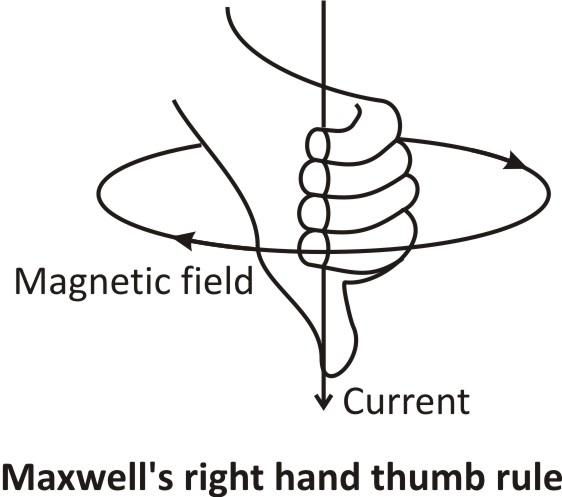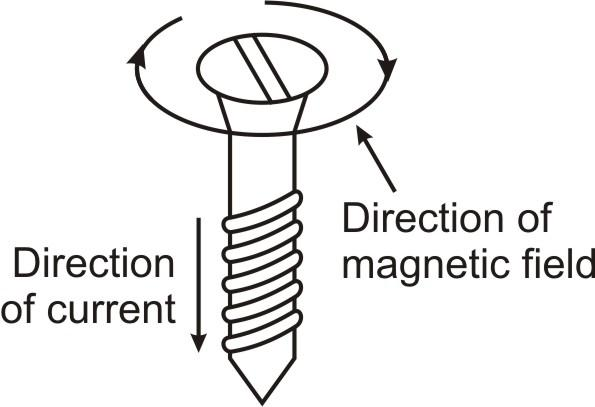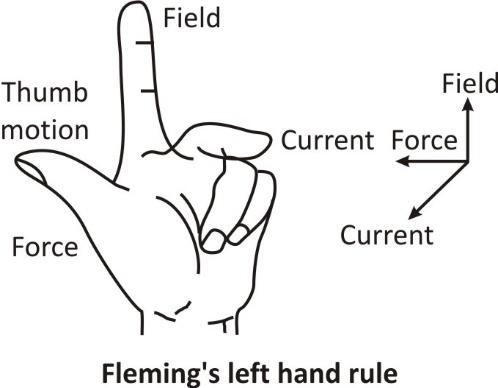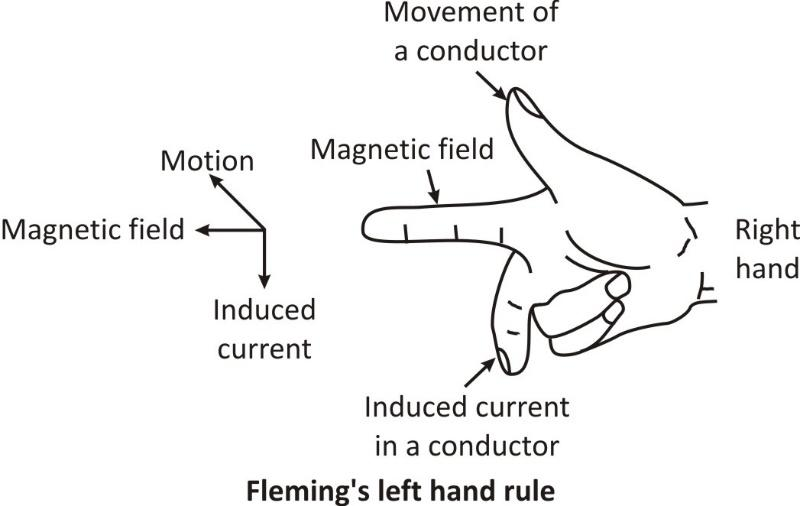
State the rule to determine the direction of a magnetic field produced around a straight conductor carrying current.
Answer
486.6k+ views
Hint: Using Maxwell’s Right Hand Thumb Rule, we can state direction of a magnetic field produced around a straight conductor carrying current.
Complete step by step answer:(i) Maxwell’s Right Hand Thumb Rule:
The- direction of the magnetic field produced by a current-carrying conductor is given by Maxwell’s right hand thumb rule.

It states that if you hold the current-carrying conductor in your right hand such that the thumb points in the direction of the current, then the direction in which the fingers encircle, gives the direction of magnetic lines. This rule is also called Maxwell’s Corkscrew Rule.
This rule can also be stated as if we consider ourselves driving a corkscrew in the direction of the current, then the direction in which we rotate the screw is the direction of the magnetic field.

Fleming’s Left Hand Rule:
The direction of force which acts on the current-carrying conductor placed in a magnetic field is given by Fleming’s left hand rule.

It states that if the forefinger, thumb and middle finger of the left hand are stretched mutually perpendicular and the forefinger points along the direction of the external magnetic field, the middle finger indicates the direction of current, then the thumb points along the direction of force acting on the conductor.
(iii) Fleming’s Right Hand Rule:
The direction of induced current in a straight conductor is given by Fleming’s right hand rule.
It states that if we stretch the thumb, forefinger and the middle finger of the right hand at right angles to one another in such a way that the forefinger points in the direction of the magnetic field.
Then, the thumb gives the direction of motion of the conductor (force), the forefinger indicates the direction of the magnetic field and the middle finger points the direction of induced current.

Note:It states that if you hold the current-carrying conductor in your right hand such that the thumb points in the direction of the current, then the direction in which the fingers encircle, gives the direction of magnetic lines.
Complete step by step answer:(i) Maxwell’s Right Hand Thumb Rule:
The- direction of the magnetic field produced by a current-carrying conductor is given by Maxwell’s right hand thumb rule.

It states that if you hold the current-carrying conductor in your right hand such that the thumb points in the direction of the current, then the direction in which the fingers encircle, gives the direction of magnetic lines. This rule is also called Maxwell’s Corkscrew Rule.
This rule can also be stated as if we consider ourselves driving a corkscrew in the direction of the current, then the direction in which we rotate the screw is the direction of the magnetic field.

Fleming’s Left Hand Rule:
The direction of force which acts on the current-carrying conductor placed in a magnetic field is given by Fleming’s left hand rule.

It states that if the forefinger, thumb and middle finger of the left hand are stretched mutually perpendicular and the forefinger points along the direction of the external magnetic field, the middle finger indicates the direction of current, then the thumb points along the direction of force acting on the conductor.
(iii) Fleming’s Right Hand Rule:
The direction of induced current in a straight conductor is given by Fleming’s right hand rule.
It states that if we stretch the thumb, forefinger and the middle finger of the right hand at right angles to one another in such a way that the forefinger points in the direction of the magnetic field.
Then, the thumb gives the direction of motion of the conductor (force), the forefinger indicates the direction of the magnetic field and the middle finger points the direction of induced current.

Note:It states that if you hold the current-carrying conductor in your right hand such that the thumb points in the direction of the current, then the direction in which the fingers encircle, gives the direction of magnetic lines.
Latest Vedantu courses for you
Grade 11 Science PCM | CBSE | SCHOOL | English
CBSE (2025-26)
School Full course for CBSE students
₹41,848 per year
Recently Updated Pages
Master Class 9 General Knowledge: Engaging Questions & Answers for Success

Master Class 9 English: Engaging Questions & Answers for Success

Master Class 9 Science: Engaging Questions & Answers for Success

Master Class 9 Social Science: Engaging Questions & Answers for Success

Master Class 9 Maths: Engaging Questions & Answers for Success

Class 9 Question and Answer - Your Ultimate Solutions Guide

Trending doubts
Give 10 examples of unisexual and bisexual flowers

Draw a labelled sketch of the human eye class 12 physics CBSE

Differentiate between homogeneous and heterogeneous class 12 chemistry CBSE

Differentiate between insitu conservation and exsitu class 12 biology CBSE

What are the major means of transport Explain each class 12 social science CBSE

a Tabulate the differences in the characteristics of class 12 chemistry CBSE




